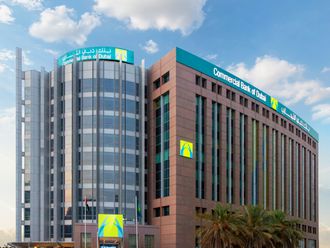Dubai
Slowing economic growth in Saudi Arabia is expected to challenge the pace of fiscal reforms as the real GDP of the country contracted in the first quarter of the year led by the oil sector.
The impact of the Opec production cuts made in January was visible in Saudi Arabia’s first quarter GDP data with the headline GDP growth contracting by 0.5 per cent year on year, down from growth of 1.2 per cent in the fourth quarter. This contraction was due to the oil sector, which fell by 2.3 per cent year on year in real terms, as Saudi Arabia cut production. This was the first fall in Saudi Arabia’s GDP growth since 2009, which was also led by a fall in oil output as global demand dropped. Analysts see a risk that oil output may remain at this lower level into the first quarter of 2018.
“We expect the oil sector to remain a drag on real headline GDP growth for the remainder of 2017, with the oil production cut being extended to the second half o 2017. The contraction in the oil sector is likely to increase in second quarter and third quarter of 2017. We foresee real GDP growth contracting by 0.4 per cent in 2017 on lower oil production,” said Monica Malik, Chief Economist of Abu Dhabi Commercial Bank.
Meanwhile, real non-oil GDP growth accelerated moderately to 0.6 per cent in the first quarter of 2017, up from 0.4 per cent in the fourth quarter of 2016. This was the fastest pace of private sector GDP growth since the first quarter of 2016 when fiscal austerity deepened.
We believe that this strengthening in private activity was largely due to the payment of government arrears, which in turn allowed the private sector to pay contractors and suppliers. However, we do not see a pickup in underlying private sector activity, which remains structurally weak in our view,” said Shailesh Jha, an economist at ADCB.
Latest Saudi Purchasing Mangers’ Index (PMI) data show Saudi Arabian non-oil private sector economy growth lost momentum in June. Both new orders and output increased at the weakest rates in eight months, impacting the growth outlook for the rest of the year.
Analysts say the bigger impact on growth will from the slowdown in the oil sector and the government sector.
“The average PMI for the first half of 2017 stood at 56, well above the neutral 50.0 level and signalling a faster rate of non-oil private sector growth than in H1 2016. However, faster non-oil GDP growth this year will likely be offset by contraction in the oil sector this year, following OPEC’s decision to extend output cuts through Q1 2018,” Sadi Khatija Haque Head of MENA Research at Emirates NBD.
The government sector contracted by 0.1 per cent year on year, reflecting the ongoing fiscal restraint. Private consumption and investment indicators have remained lacklustre in 2017 so far, despite the weaker fiscal consolidation. This includes the reversal of the public sector pay cuts and reinstatement of public sector allowances. Moreover, there have not been any signs of further subsidy reforms as yet, including of household electricity prices.
Analysts expect comprehensive reforms under Fiscal Balance 2020 Programme over the period from the second half of 2017 till 2020. These reforms are likely to fundamentally transform the economy’s growth model by removing some sources of competitive advantages in the private sector, altering the social contract, introducing taxation, as well as instituting a social safety net and selective government support to corporates.
“The authorities’ desire to support the private sector during the adjustment process inevitably brings tensions with the ambitious fiscal agenda. As such, we expect the government to announce a private sector support package that is likely to selectively shelter strategic sectors and systemic entities,” said Jean-Michel Saliba, Mena Economist at Bank of America Merrill Lynch.










